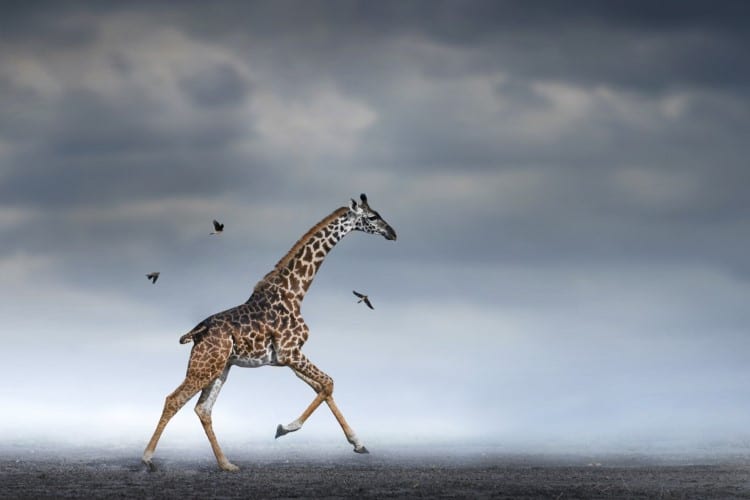
“Atmosphere” by Shaaz Jung. Location: Tanzania.
In June, 100 world-class conservation photographers are selling their works for charity. 100 for the Ocean is an annual event organized by conservation photographers Paul Nicklen, Cristina Mittermeier, and Chase Teron. They’ve hand-selected the talented group of photographers and artists who will sell limited-edition pieces for an affordable price.
All of the art is on sale starting at $100, and 100% of net profits benefit three ocean-focused organizations making a difference in ocean conservation. Some of our favorite nature and wildlife photographers—including Robert Irwin, Thomas Vijayan, Steve McCurry, and Shaaz Jung—are participating in the event.
The sale is a wonderful way to own a piece of fine art photography while also giving back to the planet. This year’s beneficiaries of the sale were all selected for the impact and integrity of their work in the ocean, and how their work can be amplified through visual storytelling. This aspect is particularly important because, in addition to funds, each charity will also receive special media coverage from SeaLegacy.
Coral Gardeners, a leader in coral restoration; Young Ocean Explorers, an organization that encourages New Zealand’s youth to take an interest in the ocean; and Ocean Initiative, which uses science to spot the stressors that are harming the ocean, will all receive support this year.
100 for the Ocean runs from June 1 to June 30, 2024. Take advantage of the moment to view over 100 photographs by 100 photographers, all available in limited editions of 100 starting at $100.
100 for the Ocean is a photography sale with a purpose.
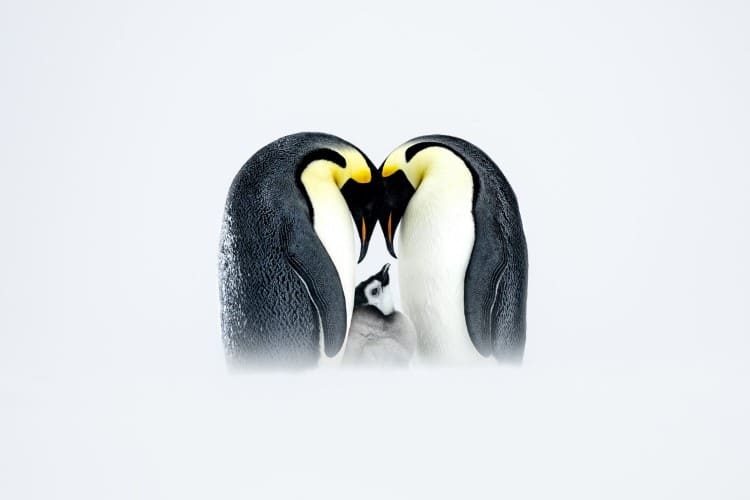
“Parenting Goals” by Thomas Vijayan. Location: Antarctica.
“Emperor penguins, native to Antarctica, exhibit remarkable family dynamics. These majestic birds engage in an intricate dance of cooperation and nurturing to ensure the survival of their chicks in the harsh polar environment. Both parents actively participate in caring for the offspring, taking turns incubating eggs and braving the cold conditions to secure food. Parental care plays a key role in the survival of the Chicks. Each chick is always taken care of by one of its own parents. Before shooting this image, I was literally lying flat on the sea ice for hours, allowing them to feel comfortable in my presence. Then, gradually, I started clicking them from different angles. This image is indeed a dear image to me, showing family love and affection and the close bond they share. In their synchronized warmth, these fluffy youngsters find comfort and strength in the heart of the frigid wilderness.”
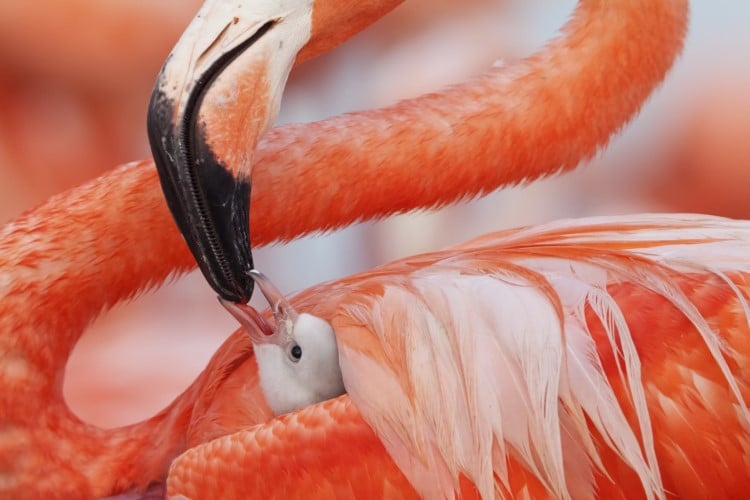
“Beak to beak” by Claudio Contreras Koob. Location: Ria Lagartos Biosphere Reserve, Yucatan Peninsula, Mexico.
“A Caribbean Flamingo (Phoenicopterus ruber) chick, less than five days old receives its food first light in the morning, a blood-red secretion generated inside the body of both parents that rapidly makes him grow. Chicks remain in the nest for less than a week, when they start wandering around the colony in crèches where they initiate to feed for themselves. For months to come they will anyway get fed by their parents.”
Over 100 photographs from 100 world-class conservation photographers are on sale for the month of June.
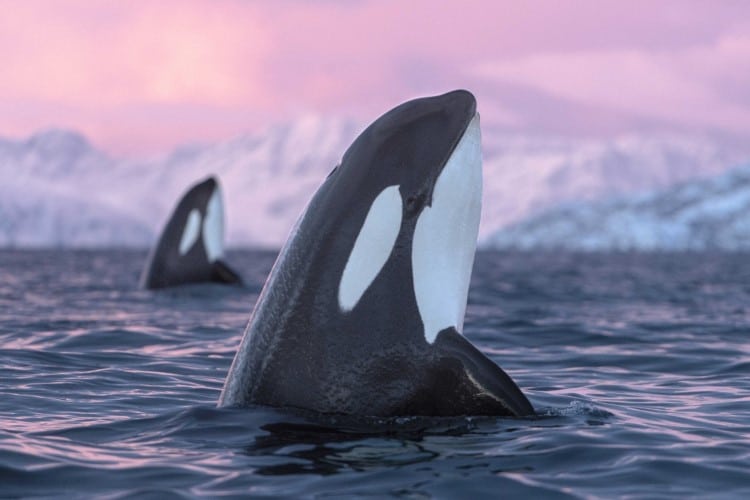
“Double Orcas” by Jens Wikström. Location: Skjervøy, Norway.
“Two orcas that spy hopped at the same time while having a bait ball one January day in one of the most northern fjords of Norway.”
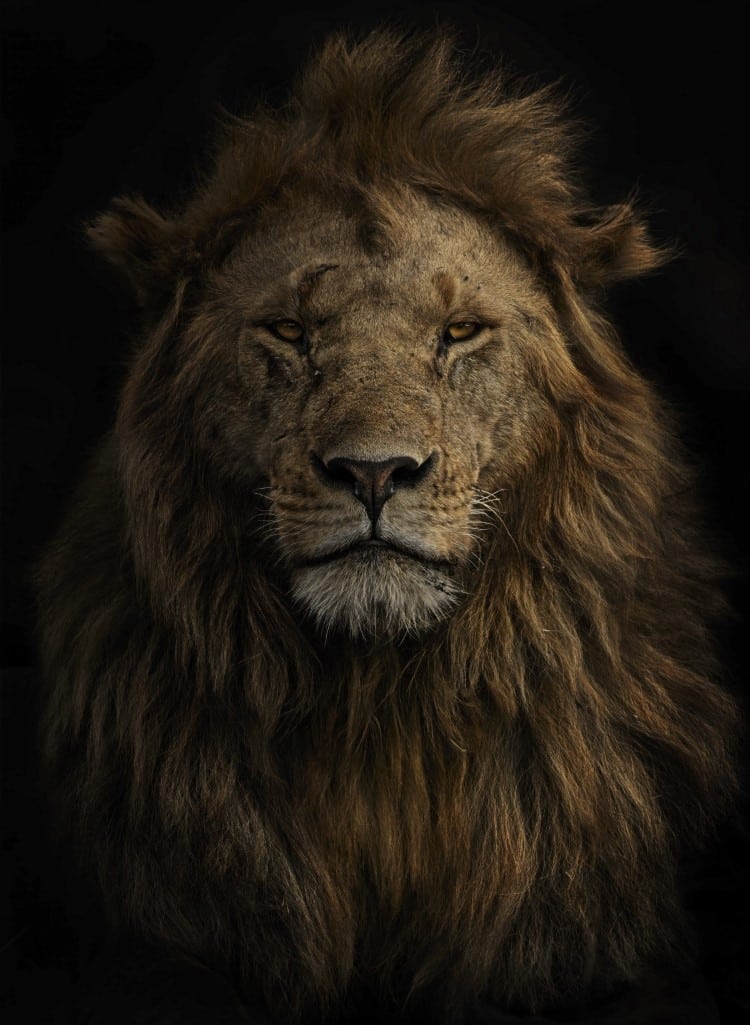
“Olobor, In Memoriam” by Marina Cano. Location: Maasai Mara, Kenya.
“It was late afternoon when I found Olobor resting. He was one of the famous five-strong coalition of males in the Black Rock pride in Kenya’s Maasai Mara National Reserve. Unfortunately, the iconic Olobor has been killed due to the conflict between humans and wildlife. Lions became extremely vulnerable and they are silently disappearing.”
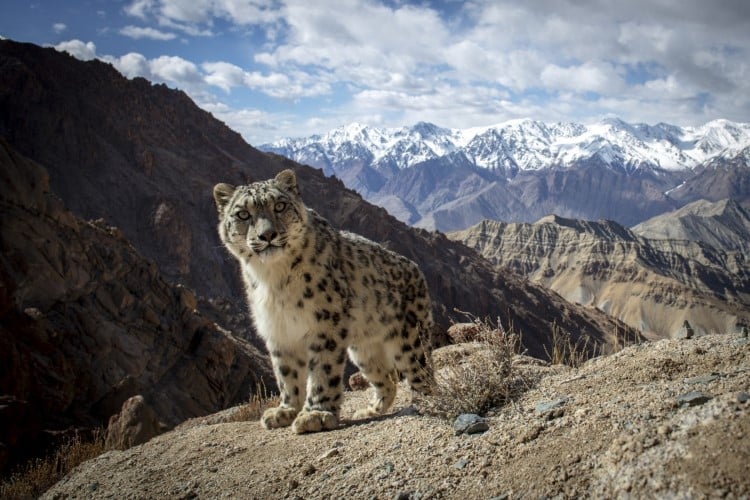
“Top of the World” by Sascha Fonseca. Location: Ladakh, Indian Himalayas.
“A young snow leopard surveys the valley, curiously investigating my camera trap.”
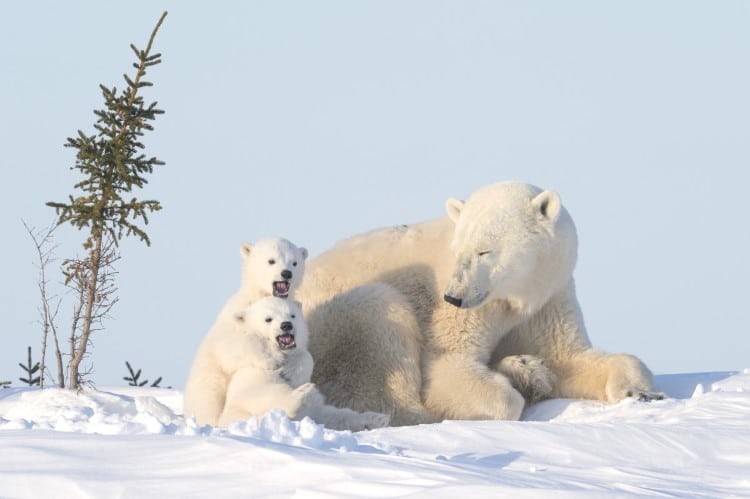
“Brotherhood” by Daisy Gilardini. Location: Wapuks NP, Manitoba, Canada.
“The bond between mother and offspring, and between sibling and sibling, is very strong. It’s the only social structure among normally solitary polar bears to be recognized and identified by scientists. Playing, chasing, wrestling, fighting, cuddling, and napping together are all part of daily life for a young bear. The cubs engage in fun and games that prepare them for their roles in life later on. Once weaned, the siblings will stick together for a while, hunting and playing.
Mothers are extremely patient with their cubs, allowing them to bite, jump, and pirouet all over and around her.”
Available in limited editions of 100, prices start at just $100.
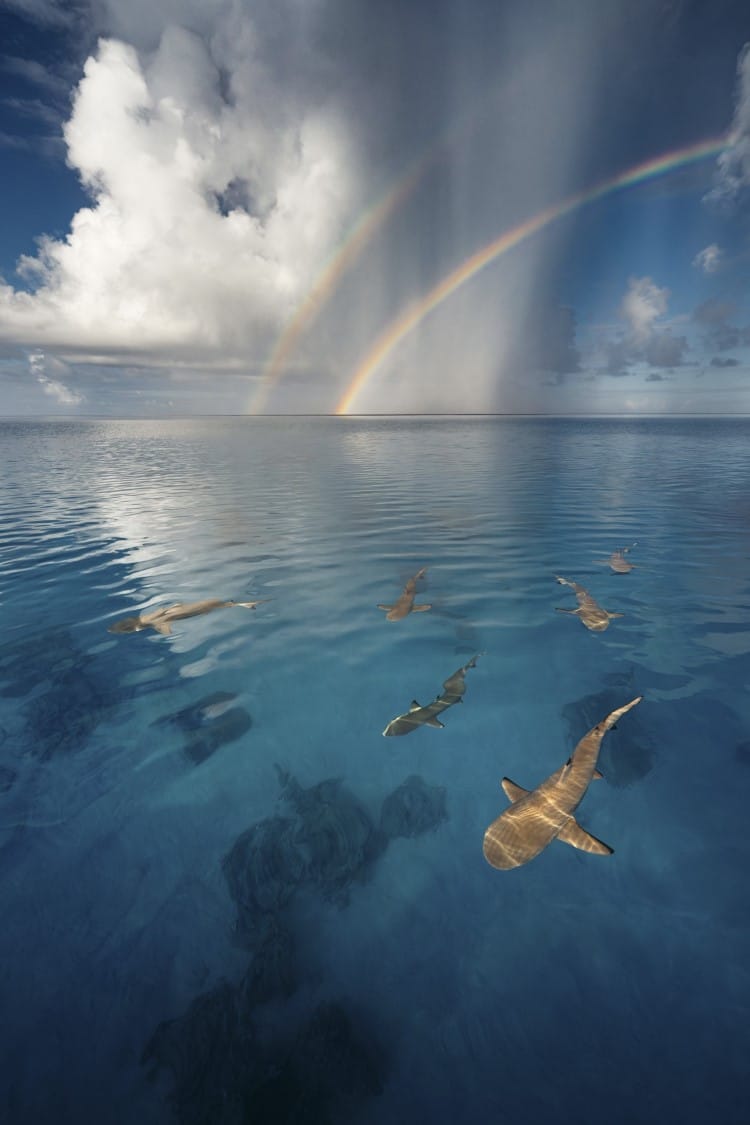
“A Slice of Heaven in the Tuamotus” by Emmett Sparling. Location: Tahanea, Tuamotus, French Polynesia.
“On our first night in the Tuamotus, we stopped in Tahanea—an uninhabited atoll deep in this stunning archipelago. We had a perfectly windless evening where the ocean turned to glass. The next morning, the water was still glassy, and a group of black-tip reef sharks patrolled the waters around our boat. Rainbows and sharks are common subjects in the Tuamotus, two things I’ll never get used to.”

“Nyinggulu Blue” by Lewis Burnett. Location: Nyinggulu Coast, Western Australia.
“The Great Hammerhead is without a doubt one of the most spectacular sharks on our planet. Whilst listed as Endangered on the IUCN red list worldwide, there is thankfully a healthy population in some of the tidal regions of Northern Australia. Specialized in hunting stingrays and other fishes hidden beneath the seafloor, they can often be found cruising across the sandy flats and lagoons of the Ningaloo Reef.”
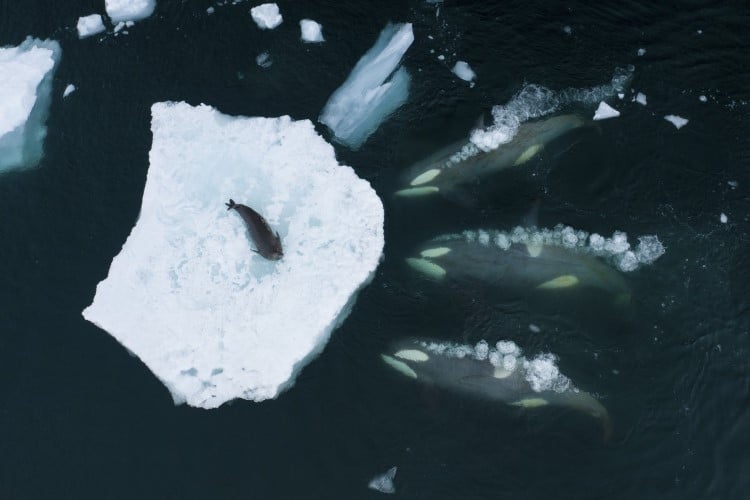
“The Wave Washers” by Bertie Gregory. Location: Antarctic Peninsula, Antarctica.
“A pod of B1 Antarctic killer whales preparing to ‘wave wash’ a Weddell seal off a piece of sea ice and into the water so they can eat it. The bubbles are thought to be part of the way they communicate with each other to form these waves. The symmetry of the killer whales demonstrates their unbelievable coordination and team work to produce waves. If they are out of sync by the smallest amount, the wave energy generated would counteract each other. I’ve never photographed an animal that so clearly demonstrates its intelligence and creativity. It sounds ridiculous to say, but these animals really are using their imaginations and teamwork to generate a unique wave for each piece of ice to hit a target they cannot see at the point they’re making the wave. Their population is estimated to be just 100 individuals, and it is declining at a rate of 5% per year due to climate change reducing ice cover—their primary prey (Weddell seal) is now spending more time resting on land rather than on ice floes. It’s feared this wave washing culture will soon go extinct.”
100% of the net profits will go toward supporting three initiatives that help protect our oceans.
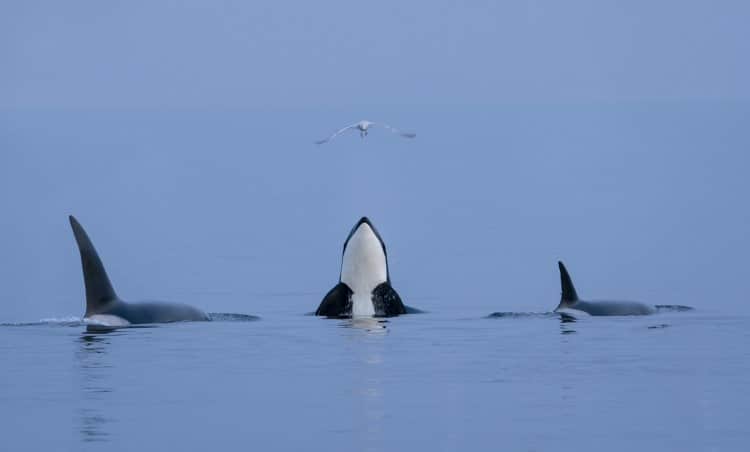
“Peekaboo” by Cristina Mittermeier. Location: British Columbia, Canada.
“There are moments like this when I simply happen to be in the right place at the right time, my eye trained on the tiny signals of life stirring beneath the surface. I waited until one of the orcas we had been watching rose from the water to peek at our boat just as a gull was swooping down from the skies. For a split second, it was like all the forces of nature conspired for the perfect composition.”
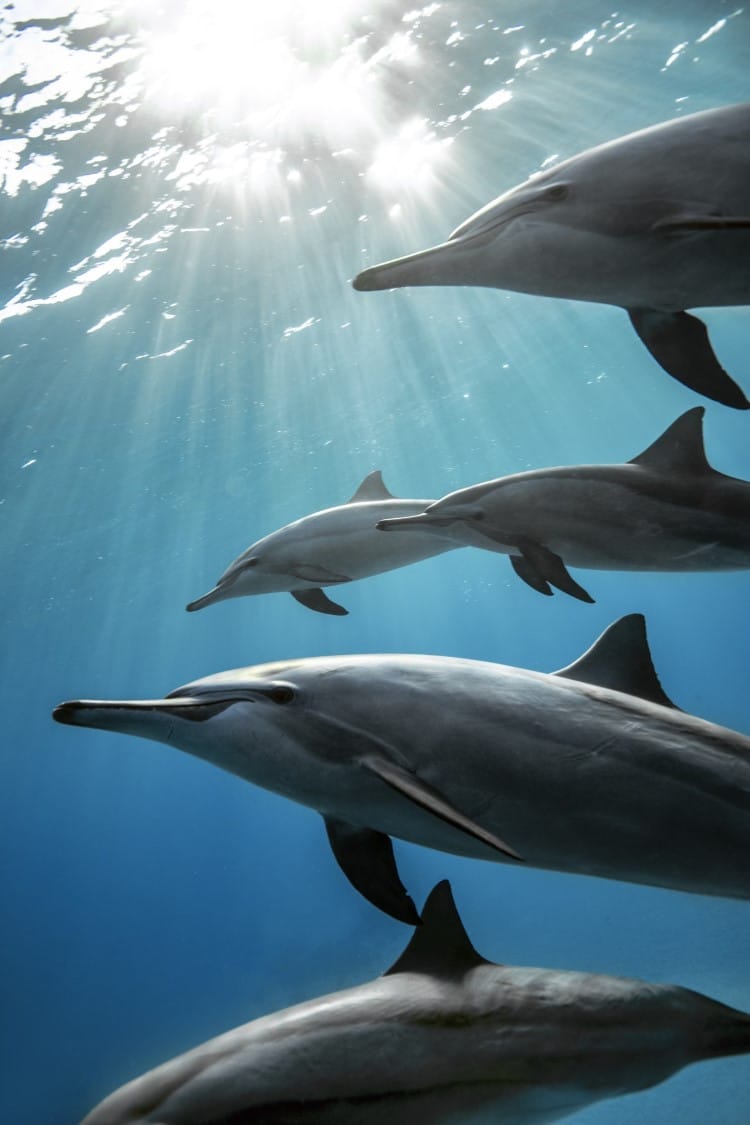
“Spinner dolphins” by Hussain Aga Khan. Location: Sataya, Egypt.
“Once again it seems as if holy light were shining down on my precious and beloved subjects. The spinner dolphins here were in shallow water – easier to get to. Holding one’s breath is hard, though, and always seems a struggle to me. Hence, capturing an image like this one under duress is always a delight.”
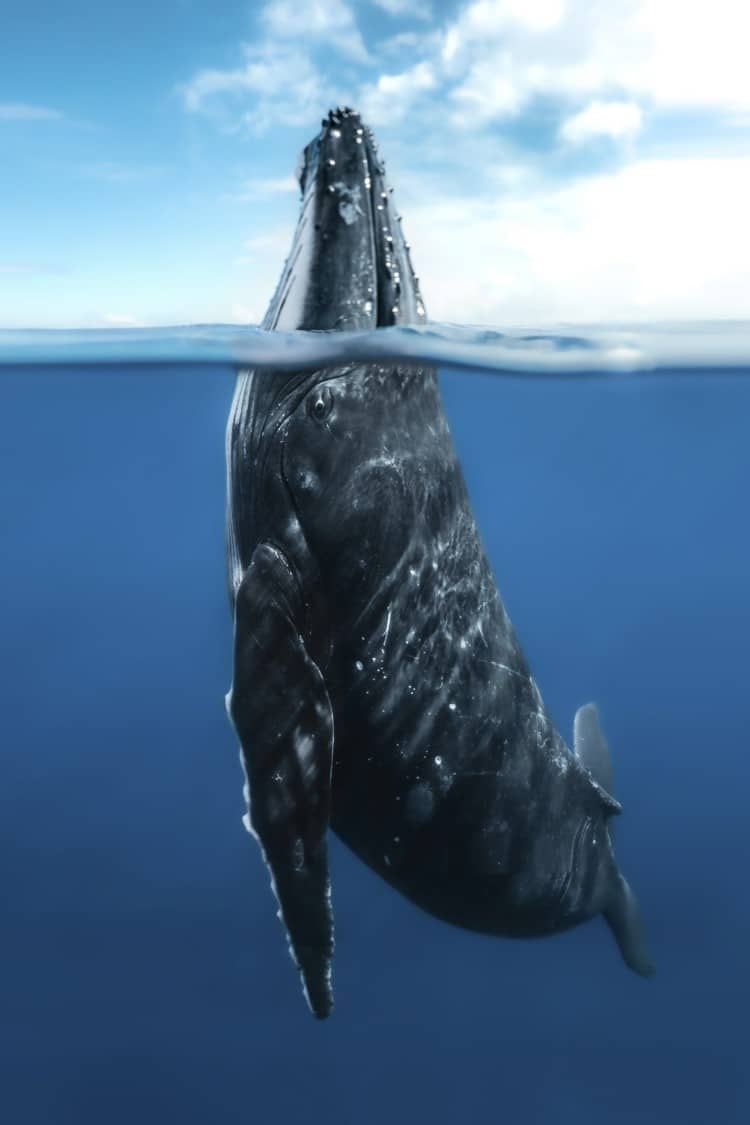
“Between Two Worlds” by Kori Burkhardt. Location: Moorea, French Polynesia.
“A curious humpback whale taking a closer look at the humans in its world. The humpback whales of French Polynesia are often playful, but this particular whale spent hours circling us in the water, dancing beneath our feet and spy hopping within arm’s reach, as if to join us in our world like we had theirs.”
Check out the sale to enhance your photography collection while helping the planet.
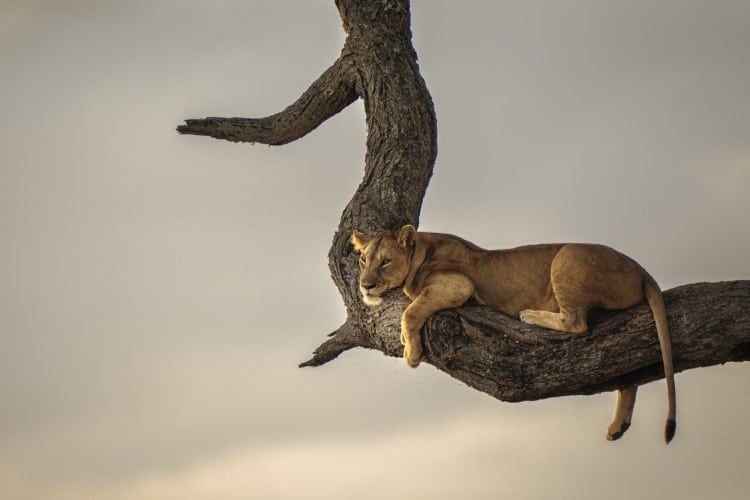
“Golden fur” by Chris Schmid. Location: Tarangire, Tanzania.
“This photograph captures the serene and peaceful image of a lioness resting on a branch at sunset in Tarangire. The warm hues of the sunset create a beautiful contrast against the lioness’s golden fur, highlighting her grace and strength. The composition of the image evokes a sense of tranquility and calm, inviting viewers to take a moment to appreciate the beauty of nature.”

“Pumas of Patagonia” by Lucas Bustamante. Location: Torres del Paine, Patagonia, Chile.
“Despite pumas being the most widely distributed wild, terrestrial mammal in the Western Hemisphere, finding a healthy population of them is more complicated every time. Habitat loss, habitat fragmentation, and depletion of its prey base due to poaching are their main threats. However, due to a 25-year vision and conservation initiatives, pumas roam and thrive in the Chilean Patagonia, being the best place to admire them in the wild, surrounded by the mesmerizing landscape of the Torres del Paine.”
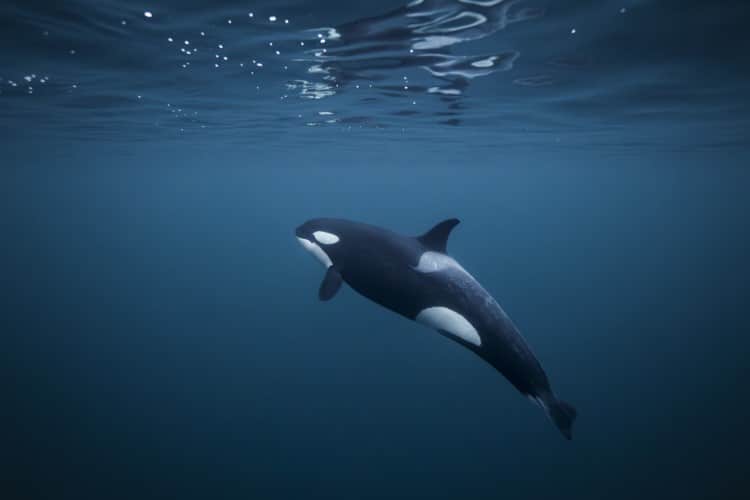
“Serenity” by Jenni Teron. Location: Northern Norway.
“In the serene depths of northern Norway’s waters, amidst the hushed tranquility of the ocean floor, a female orca gracefully navigates through the stillness, her sleek form cutting through the tranquil waters as she tracks the annual herring migration. This moment of silent beauty encapsulates the profound connection between predator and prey in the underwater realm.”
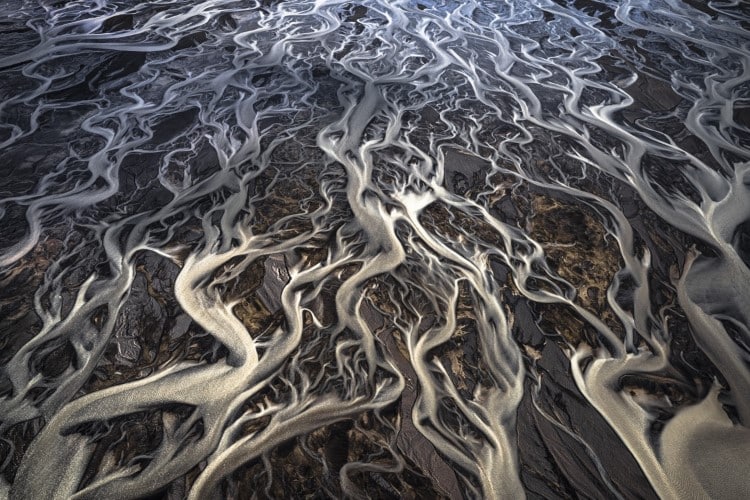
“Web of Water” by Chris Web. Location: Iceland.
” A river of glacier water twists and turns, running over and under and through itself as it moves in every direction yet the same direction all at once. Photographed from a small Cessna over the Icelandic Highlands in Landmannalaugar. The patterns and water movements in these river deltas are so intricate and complex with their tendrils wrapping every which way. It is quite possibly the most beautiful natural abstracts on earth. These melt waters start in the highlands after the winter thaw out, flowing here in the Tungnaá River, and eventually make their way to the ocean with every twist and turn in this remarkable journey.”
